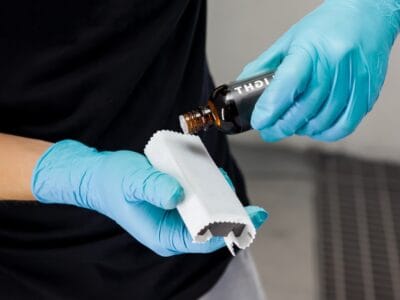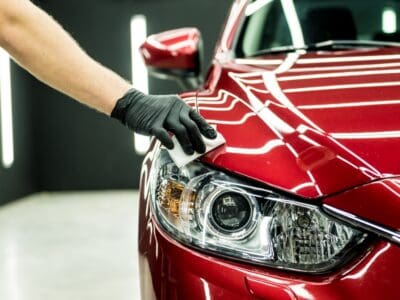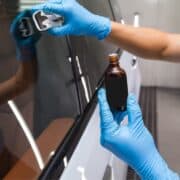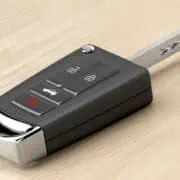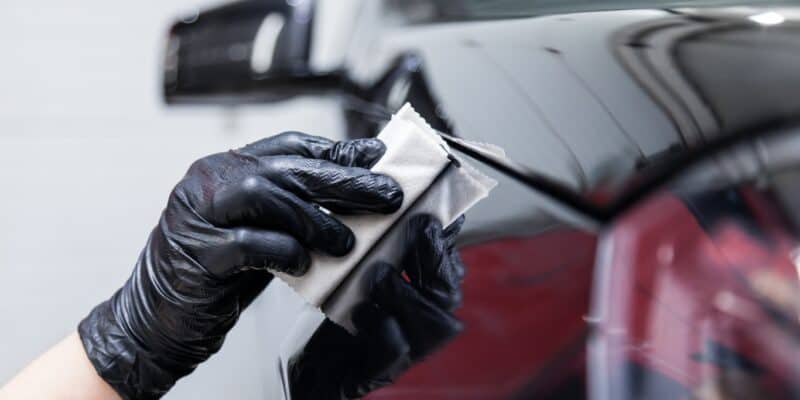
Every car enthusiast knows the joy of driving a gleaming, freshly-waxed car that turns heads as you cruise by. Wax was the go-to product for achieving this until ceramic coatings entered the picture, promising showroom-level shine and paint protection.
In fact, the best ceramic coating products promise insane levels of protection for incredibly long periods. But how long does a ceramic coat last, actually? Keep reading to find out.
The Typical Lifespan of Ceramic Car Coating
Ceramic car coatings are known for their durability and long-lasting properties. On average, a properly applied ceramic car coating can last anywhere from 2 to 5 years. However, the lifespan of a ceramic coat varies depending on several factors.
Choice of Ceramic Coating
The quality of the ceramic coating you choose significantly affects how long it will last. Higher-quality ceramic coatings with several layers tend to have longer lifespans compared to simple spray-on options.
Application and Installation
The application and installation process of a ceramic coat could also affect its lifespan. A properly applied product—whether DIY or by a professional—ensures better adhesion and, consequently, longevity. For the best results, always follow the manufacturer’s instructions.
External Conditions
The weather and other environmental factors impact the lifespan of a ceramic coat. Harsh conditions like extreme heat, cold, and acidic rain can cause the coating to degrade faster. Similarly, exposure to environmental contaminants like dirt, pollutants, and UV rays can also affect the coating’s durability.
Care and Maintenance
Proper care and maintenance are essential in extending the lifespan of a ceramic coat. Regular cleaning with a good car wash soap and water, avoiding abrasive products or harsh chemicals, and drying the vehicle properly after washing can help preserve the coating. Additionally, avoiding scratches, swirl marks, and frequent exposure to high-pressure car washes contribute to a longer lifespan of the ceramic coat.
How Do Manufacturers Make Ceramic Coating Guarantees?
Many ceramic coating products have estimated durability periods boldly printed on them. Some promise a lifespan of up to 1 year; others 2 years, 5 years, and even 10 years. Does this guarantee take into consideration harsh environments and possibly poor maintenance, or is it only relevant for cars coated and kept in showrooms and driven once or twice a year?
Of course, the ceramic coating on a car that you hardly drive and isn’t exposed to the weather will likely last even beyond the manufacturer’s guarantees. However, it would be foolhardy to think that ceramic coating manufacturers make claims based on this.
When making their guarantees, manufacturers factor in typical usage patterns and environmental factors they expect the majority of cars to encounter. This includes the usual stuff like sunlight, heat, cold, rain, dirt, and other everyday conditions. It also takes into account that most car owners will not be able to provide the highest level of care and maintenance to their vehicles.
Hence, if you are a regular car owner like the rest of us, racking up the miles on the odometer year in, year out, and following the minimum recommended maintenance routine, you can expect the ceramic coating to last as long as the manufacturer guarantees or get pretty close.
It goes without saying, but if you tend to put your car through more demanding situations, such as frequent, long road trips and extreme weather conditions or neglect regular cleaning and maintenance, the coating may not last as long as expected.
What Makes Ceramic Car Coating Wear Out Fast
Ceramic coating is known for its durability and long-lasting protection against environmental elements. However, several factors may cause it to wear out faster than normal. Here are some of them:
Improper Application
Using ceramic coating requires careful preparation and meticulous application to ensure proper bonding and adhesion to the vehicle’s paint surface. If the coating is not applied correctly or if the surface is not adequately prepared, it may not adhere properly and can wear out faster.
Low-Quality Coating
The quality of a ceramic coat plays a crucial role in its durability. Low-quality products usually don’t have the same level of protection or longevity as higher-quality coatings. Using a subpar or counterfeit ceramic coating can result in premature wear and reduced performance.
Environmental Factors
Exposure to harsh environmental elements, such as UV rays, extreme temperatures, acid rain, saltwater, and pollutants, can degrade the ceramic coating over time. These factors can break down the coating’s protective properties and cause it to wear out faster, especially if the vehicle is regularly exposed.
Abrasive Cleaning Techniques
Improper washing with harsh chemicals, abrasive brushes or sponges, or automated car washes with brushes can damage the ceramic coating. These methods can cause scratches and swirl marks on the coating’s surface, leading to faster wear and deterioration.
Lack of Proper Maintenance
Proper care and maintenance are essential to ensure the longevity of ceramic coatings. Neglecting regular cleaning, drying, and maintenance routines can allow dirt, grime, and contaminants to accumulate on the coating’s surface, reducing its effectiveness and causing premature wear.
Mechanical Damage
Physical damage, such as accidental scratches, chips, or impacts from road debris, can wear out the ceramic coating faster. These damages can compromise the coating’s integrity and expose the underlying paint surface to environmental elements, leading to accelerated wear and deterioration.
The Best Time To Get a Ceramic Coating
The best time to get a ceramic coating for your car is when it’s new or freshly painted. Applying the coating to a clean and properly prepared surface can result in better adhesion and longevity. Also, since the paint job is literally brand new, you’ll be covering up and protecting the car while it’s in its best condition, free from contaminants, swirl marks, or scratches.
But what if you don’t have a new car or haven’t recently resprayed your old one? Well, the second best time to get a ceramic coating is now.
Unless you’re planning to throw your car in the junkyard, it’ll benefit from ceramic coating so long as the paint is not all bruised up or peeling off to expose the metal underneath. Just follow our guide to applying a ceramic coat, and you should be good to go.
How To Extend the Life of Your Car Coating
Here are some tips on how to maximize the durability and effectiveness of your ceramic coating:
Regular Washing
Wash your car regularly using a gentle, pH-neutral car wash soap and a microfiber towel or wash mitt. Avoid using harsh detergents, abrasive materials, or automatic car washes that can damage the ceramic coating.
Proper Drying
After washing, dry your car thoroughly using a clean, soft microfiber towel or a blower. Avoid air-drying or letting water spots dry on the surface, as they can leave mineral deposits that can damage the coating.
Avoid Harsh Chemicals
Avoid using harsh chemicals or acidic cleaners on your car’s coated surface. These can degrade the ceramic coating and compromise its protective properties. Stick to mild, pH-neutral cleaners that are safe for automotive use.
Avoid Abrasive Contact
Be mindful of any abrasive contact with your vehicle’s paint, such as rubbing against it with clothing, using rough brushes or towels, or scraping off debris with hard objects. These can scratch or damage the ceramic coating, reducing its effectiveness.
Parking Considerations
Whenever possible, park your vehicle in a shaded area or a covered parking spot to protect it from prolonged exposure to UV rays, bird droppings, tree sap, and other environmental contaminants that can damage the coating. This doesn’t mean you should become insensitive and demand shaded parking spots everywhere you go—it’s just a consideration.
When To Replace Your Ceramic Car Coating?
Even with proper care and maintenance, ceramic car coatings will eventually wear out over time. Signs that it’s time to replace your coating may include reduced hydrophobic properties, diminished gloss, increased water spotting, and decreased protection against environmental contaminants. Keep an eye on the performance of the coating and try to get it renewed if you notice any significant changes.
Understanding Ceramic Coating Durability
So, how long does a ceramic coat last? From the article, it’s clear that the answer depends on several factors, such as the coating product, application and installation, external conditions, and maintenance.
If you’d like to get your car coated but don’t know where to start, see our breakdown of the cost of ceramic coating, both DIY and with a professional.



